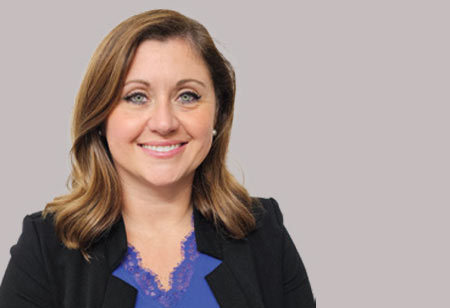Thank you for Subscribing to Healthcare Business Review Weekly Brief

Anchoring Quality Care with Collaboration
Healthcare Business Review
Amber Howard, Director of Corporate Risk Management for Infirmary Health has earned a Bachelor of Science in Nursing from Spring Hill College and a Master of Business Administration and Health Care Management from Columbia Southern University. Obtaining her certification as a Certified Professional in Healthcare Risk Management from the American Hospital Association, Amber has a passion for safe, high-quality care.
Safety is one of many essentials of healthcare institutions that each employee is expected to provide. This inter-departmental element entails consistent management and unity for seamless patient care. Amber Howard offers a fresh perspective on mitigating risks by collaborating with many departments. Enhancing experiences in healthcare, she urges decision-makers to prioritize a just environment and open communication.
Securing opportunities
My professional journey in healthcare started 18 years ago as a bedside nurse on a cardiac step-down unit at one of the hospitals within Infirmary Health System. After serving in a bedside care role for 6 years, I became interested in doing more and making a difference within the health system. That opportunity presented itself when a position in the quality management department opened that would allow me to impact patient care and improve outcomes for future patients. Here, I created a pathway through a multifaceted system to expand my knowledge and understanding of healthcare from a different perspective. These experiences exposed me to every operational level within the organization, broadening my healthcare knowledge and how each operation impacted patient care and safety. With this experience, I was awarded the position of Director of Corporate Risk Management at Infirmary Health, the largest not-for-profit, non-governmental healthcare system in Alabama.
Reduced potential risks along evolving healthcare
Our health system uses an electronic reporting tool that allows healthcare team members to report any concerns, ranging from a near miss to a significant injury. This robust reporting system allows Risk Management, Patient Safety and Quality Management to work together and evaluate incidents for trends or potential root causes and implement corrective measures. A key strategy in making this work is the high buy-in from the system’s leaders and administration.
My risk managers, along with myself and leaders across the system, work diligently responding to and resolving concerns which helps build trust with staff and gives them the confidence to continue to report concerns. In adhering to this process, the ability to identify and mitigate potential risks got easier and the concept of working in silos was largely eliminated. Another key strategy is the ability to report anonymously if preferred, and non-punitive and non-retaliatory reporting. This gives staff the freedom to report concerns without fear of retribution so that we can improve our quality of care, decrease harm or even better, avoid it. When employee concerns arise, our healthcare system has a “Just Culture” algorithm to help our organization create a fair and just environment by focusing on system design and behavioral choices rather than blaming individuals for errors.
“When employee concerns arise, our healthcare system has a “just culture” algorithm to help our organization create a fair and just environment by focusing on system design and behavioral choices rather than blaming individuals for errors”
Patient-centrism and real-time data
One of the most recent challenges the health system has faced is the requirement to provide patients with complete access to their electronic medical records in real-time and avoid information blocking. The challenges posed by this new requirement have been felt across many departments within the health system, including Risk Management. Knowing that a patient or patient representative may potentially disagree with what is documented when the staff providing care is documenting events in real-time can create stress on the caregiver.
This challenge has also increased the workload on our Release of Information Department for medical record amendment requests. What is more concerning is the fact that we have seen an increase in workplace violence toward our staff and physicians from certain patients who have access to their medical records in real-time. Risk Management has increased surveillance of these incidents, working closely with the health system’s Protective Services Department and Compliance on ways to protect our staff without violating patients’ rights.
Safe upgrades
Risk Management, along with General Counsel and the Compliance Department, work diligently together to evaluate any potential risks to patients that new technologies may bring and we educate our leaders and administration to do the same. Recently, our IT team planned a complete network outage required to maintain and improve our network infrastructure, performance, reliability and security. Before initiating the outage, our leaders across the organization discussed, planned and developed safeguards to make this vulnerable time safe for our patients and staff. We also initiated and utilized a command center developed for emergencies to have extra staff and leaders on hand during overnight hours to be available while the upgrade occurred. The entire success of this outage and upgrade was the result of the significance that we placed on keeping our patients safe.
Mindful implantation of technology
Build the right team of people to evaluate the technology and its impact on compliance and healthcare operations. A key consideration is to evaluate the technology from the perspective of the group who will be using it, bring in the experts and frontline staff. On paper, it may look great, but in practice, it may not be suitable for the job or the hospital. Such misjudgments may lead to the pitfall of trying to implement new technology that staff often feel hinders their workflow or creates patient care/safety concerns. These challenges staff face often lead to noncompliance or failure. So, when implementing any new technologies, education will be paramount to compliance and enforcing the change will require accountability for the leaders and the staff.









